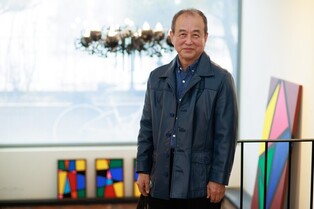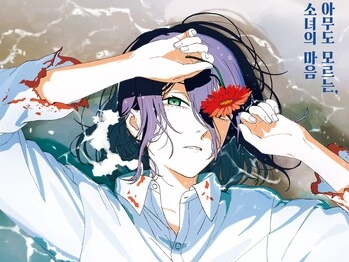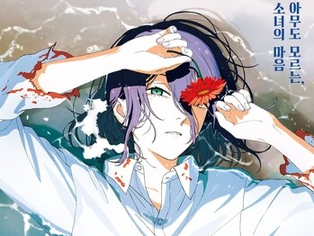*Editor’s note: K-VIBE introduces travel journals by alumni of Yonhap News Agency Travel Academy, provided in Korean and English. The original Korean article precedes the English translation.
*편집자 주: K-VIBE는 연합뉴스 <여행자학교> 수료생들의 여행기를 한국어와 영어로 소개합니다. 한국어 원문을 먼저 게재한 뒤 외국 독자들을 위해 영어 번역본도 함께 싣습니다.
이민사회로 가는 길 연재시리즈 1
조화와 공존의 아름다움을 위하여
윤향옥 (여행자학교 1기, 서울글로컬교육연구원장)
‘조화(harmony)’는
아름다움의 기본입니다. 우리가 아름답다고 표현할 때는 그 바탕에 균형이나 조화가 내재돼 있습니다. 건축물이나 조각품, 음악과 미술작품에서 아름다움의 결핍을 느꼈다면
어딘가에서 불균형이나 부조화 때문일 것입니다.
예술 작품뿐 아닙니다. 우리 사회에서도 상호 관계가 서로 어긋날 때는 개인의 행동이 남에게 피해를 주게 되고, 조화로울 때에는 서로에게 혜택을 주면서 집단적인 합리성이 저절로 실현됩니다.
경제학자들은 이러한 상황을 ‘조화게임(harmony game)’으로 설명합니다.
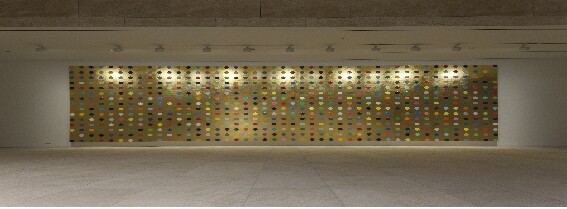 |
| ▲ 데미안 허스트(Damien Hirst)의 작품 ‘스팟 페인팅(Spot Painting)’ |
미술작품을 예로 들어 봅니다. 데미안 허스트(Damien Hirst)의 작품 ‘스팟 페인팅(Spot Painting)’입니다. 동등한 크기로
그린 색색의 형태들이 전체적인 아름다움을 표현하고 있습니다.
작품 속의 한 개의 노랑은 파랑과 초록
옆에서 똑같은 질량을 갖고 태양다운 생명을 뽐내고 있습니다. 때론 유사한 노랑 옆에서 엇비슷한 동색의
조화를 이루기도 합니다. 이렇듯 수많은 스팟들이 자기의 존재를 당당히 드러내며 작품을 이루고 있습니다.
하지만 예술가가 조화를 품은 아름다운
창작품을 만들거나, 정치인들이 사회 구성원들의 이익 극대화를 보장하면서도 조화로운 세상을 얻어내기는
쉽지 않습니다. 데미안 허스트의 거대한 설치 미술 작품 속의 스팟 하나하나를 사람, 집단, 커뮤니티, 인종, 민족 나아가 국가로 대치해 봅시다. 그림이 추구하는 것처럼 우리도
이상적인 조화, 모두가 함께하는 공존, 아름다운 세상을 자연스럽게
만들 수 있을까요? 스팟 사이의 부조화나 간극이 생기는 이유는 무엇이며 어떻게 치유할 수 있을까요?
보다 나은 환경을 찾아 주거지를 이전하는
것은 자연스러운 현상입니다. 때로는 기원전 유태인이나 아르메니아인들의 사례들처럼 인종적, 종교적, 정치적 요인으로 추방을 당한 사례도 많습니다. 박해를 피해 국가나 지역을 넘어 이주하는 경우도 많아지고 있습니다.
거주지 배출-흡입이론(push-pull theory)이나 디아스포라 이론들에 의하면
빈곤, 경지부족, 인구과밀 뿐만 아니라 차별과 박해 등이
국경을 넘는 주요 요인이었습니다. 그렇지만 오늘날은 세계화(globalization)가
국가 간 비교우위를 통하여 주도적으로 이주를 하는 요인으로 자리 잡고 있습니다.
체코 작곡가 드보르작은 19세기 후반 미국으로 파견을 가서 ‘신세계 교향곡’을 작곡해 아메리카대륙의 광활한 자연, 도시의 활기, 미국적인 민요 등에 대한 인상을 담아내 미국에 대한
환상을 심어 줬습니다.
16세기 중엽부터는 아메리카대륙으로 이주가 시작돼 산업혁명 이후 본격적인
이주가 이뤄졌습니다. 우리가 잘 아는 알렉시 드 토크빌은 19세기
중반 미국을 방문해 자유와 평등을 강조한 ‘미국의 민주주의’를 저술해 이민의 나라 미국 사회를 잘 묘사했습니다.
하지만 최근에는 이민자들의 나라이자 민주주의의
모국인 미국에서도 아시아인에 대한 혐오행태가 자주 발생하고 있어 이주 갈등 문제를 여실히 노출하고 있습니다.
아시는 바와 같이 우리는 출산율 급감, 생산가능인구 구성비 감소 등으로 외국인의 유입이 불가피한 상황에 있습니다. 국내체류
외국인은 수년 전에 200만 명을 넘었습니다. 이민정책연구원의
분석에 의하면 2030년에는 414만 6천명 의 대체 외국인이 필요하다고 합니다. “대한 사람 대한으로
길이 보전하세” 라는 애국가의 숙연한 결의가 무색해지고 있습니다. 민족의 소멸이 염려되는 상황에서 이민사회로의
관심은 고조될 수밖에 없습니다.
그동안 이민을 온 사람들에 대한 처우와
국민통합의 과제를 두고 많은 논의와 실험들이 계속됐습니다. 각계의 노력으로 선주민의 다문화감수성은 많은
발전을 보였습니다.
선별적 교육은 물론 TV드라마나 공익광고 등 부단히 다문화사회 인식개선을 선도했습니다. 영상
속의 이주민이 지하철, 공원, 공공기관, 특히 군부대에서까지 바로 내 옆자리에 자리하고 있음에 놀라지 않습니다. 그러나
민주주의 선진국인 미국의 사례에서 보듯 조화롭고 모두가 공존하는 다문화사회를 꾸리는 일은 쉽지는 않습니다.
다시 허스트의 그림을 봅니다. 그림에서 하나하나의 스팟을 사람으로, 스팟이 차지하는 공간을 인권으로
비교해 보고자 합니다.
선주민이나 이주민이나 한 사람이 한 개의
스팟으로 대한민국의 공간에 자리하고 있다고 생각합니다. 각각의 위치와 공간과 색깔은 개인의 것입니다. 그것은 천부의 인권이자 자산이고 재량입니다. 존재 그 자체입니다. 지금 우리는 인권의 관점에서 각 스팟의 모든 속성을 수용하고 있는지, 각
스팟의 무게에 대한 형평성을 살펴야 할 시점입니다.
17세기에 이르러 토마스 홉스나 존 로크 등 자유주의 사상가들은 신과 왕으로부터
인간의 권리를 찾아주었습니다. 이후 우리는 누구나 어디에서나 사람답게 살 권리, 늙어가면서도 외롭지 않을 권리를 천부인권으로 누릴 수 있음을 알고 있습니다.
다양한 이주배경인들 역시 대한민국 국민으로서
권리를 향유하고 의무를 지게 됩니다. 준비되지 않았던 우리나라 이주민 역사에는 인권이 소외된 사례가
많았습니다. 대구 이주여성인권센터는 “한국사회는 가해자에게 굉장히 관대하다”고 지적하면서 물리적 가정폭력, 집단따돌림, 차별 등을 폭력의 유형으로 제시했습니다.
인간의 존엄성을 인정받기 위해서는, 자유, 안전, 일정 수준
이상의 삶의 조건이 보장돼야 합니다. 각국이 채택한 ‘국제인권규정’을 비롯한 인권규정은 정부가 인권과
관련해 자국 영토에 거주하는 사람들을 위해 해야 할 것과 하지 말아야 할 것들을 제시하고 있습니다. 국내
다문화 사회, 이주배경가족들을 위한 특별 인권법을 제정하자는 요구도 높습니다.
1948년 선포된 세계인권선언은 인권의 구체적인 범위를 나타내고 있습니다. 특히 제2조를 공유함으로써 조화와 공존의 가치를 새기고 공감을 구하고자
합니다.
세계인권선언문
제2조 : 모든 사람은 인종, 피부색, 성, 언어, 종교, 정치적 견해 또는 그 밖의 견해, 출신 민족 또는 사회적 신분, 재산의 많고 적음, 출생 또는 그 밖의 지위에 따른 그 어떤 구분도 없이, 이 선언에
나와 있는 모든 권리와 자유를 누릴 자격이 있다.
Way to Immigration Society #1
For the beauty of harmonious coexistence
By Yoon Hyang-ok (Alumna of Travel Academy season 1/ Director of Seoul Global Education Research Institute)
“Harmony” is the foundation of beauty. When we express something as beautiful, it is often underpinned by balance and harmony. If we feel a lack of beauty in architecture, sculptures, music, or art pieces, it may be due to some imbalance or disharmony.
This extends beyond art; in our society, when relationships deviate, individual actions can harm others, and in harmony, mutual benefits foster collective rationality. Economists explain such situations as a “harmony game.”
Let's consider artworks. Take Damien Hirst's “Spot Painting” for example.
 |
| ▲ “Spot Painting” by Damien Hirst (PHOTO NOT FOR SALE) (Yonhap) |
Shapes of various colors, drawn in equal sizes, express an overall beauty. A single yellow spot in the artwork exudes a sun-like vitality with the same mass as the blue and green spots beside it. At times, similar yellow spots create harmonious blends with adjacent colors. Many spots confidently reveal their existence, forming the artwork.
However, it is not easy for artists to create harmonious and beautiful creations or for politicians to ensure the maximization of the interests of society's constituents while achieving a harmonious world.
Let's juxtapose each spot in Damien Hirst's massive installation artwork with individuals, groups, communities, races, ethnicities, and nations.
Can we naturally create an ideal harmony, coexistence where all unite, and a beautiful world, as the painting seeks? What causes disharmony and gaps between the spots, and how can we heal them?
Relocating to seek a better environment for one's residence is a natural phenomenon. Sometimes, cases of expulsion due to racial, religious, or political factors, like those of ancient Jewish or Armenian communities, are prevalent. Migration beyond national or regional borders to escape persecution is also increasing.
According to theories like the push-pull theory or diaspora theories, poverty, scarcity of resources, population density, as well as discrimination and persecution, were significant factors crossing borders. However, in today's world, globalization establishes itself as a leading factor in migration, driven by intercountry comparative advantages.
Czech composer Antonin Dvorak, in the
late 19th century, was sent to the United States and composed the “New
World Symphony,” capturing impressions of the vast American continent's nature, the vibrancy of its cities, and the essence of American folk
songs. This sowed the seeds of an idealized vision of America.
From the mid-16th century, migration to the American continent began. After the Industrial Revolution, substantial immigration took place. Renowned Alexis de Tocqueville, who visited the United States in the mid-19th century, emphasized freedom and equality in his writing “Democracy in America,” vividly depicting the immigrant society of the United States.
However, recently, even in the United States, a nation of immigrants and a democracy, instances of anti-Asian sentiments have been occurring frequently, highlighting the persistent issue of immigration conflicts.
As you are aware, we are facing a situation where the influx of foreigners is inevitable due to declining birth rates and a decreasing proportion of the working-age population.
The number of foreign residents in South Korea surpassed two million several years ago. According to analysis by the Immigration Policy Research Institute, it is projected that 4.146 million foreign nationals will be needed by 2030.
With concerns about the potential disappearance of our ethnicity, it is only natural that interest in immigrant society is on the rise.
Over time, there have been extensive discussions and experiments regarding the treatment of immigrants and the task of national integration.
Efforts from various sectors have led to significant progress in the multicultural sensitivity of the indigenous population. Selective education and initiatives like TV dramas and public service advertisements have continuously led to an improved perception of multiculturalism. Seeing immigrants in videos sitting beside us on subways, in parks, public institutions, and even military bases is no longer surprising.
However, as evidenced by the example of the advanced democratic nation, the United States, building a harmonious and coexisting multicultural society is not an easy task.
Let's once again look at Hirst's artwork. We attempt to compare each spot in the painting to individuals and the space occupied by each spot to human rights.
I see the analogy between the spots in the artwork and individuals, whether indigenous or immigrant, occupying a space within the territory of South Korea.
Each spot's position, space, and color represent personal attributes -- an inherent human right, an asset, and discretion. It's an embodiment of existence. At this juncture, it's important to examine whether we are embracing all attributes of each spot from a human rights perspective and ensuring fairness in the weight each spot carries.
Dating back to the 17th century, liberal scholars like Thomas Hobbes and John Locke sought to find human rights from God and the monarchy. Since then, we've come to recognize that everyone, everywhere, has the right to live with dignity and not to be isolated as they age -- these are fundamental human rights.
People from various immigration backgrounds also enjoy rights and responsibilities as citizens of South Korea.
In the previously unprepared history of immigration in our country, instances of neglecting human rights were abundant.
The Daegu Women's Human Rights Center pointed out various forms of violence, including physical domestic violence, group ostracism, and discrimination, in the context of immigrant women's experiences, highlighting the need for special human rights laws for multicultural societies and immigrant families.
To ensure human dignity, freedom, safety, and a certain level of well-being must be guaranteed.
Various international human rights frameworks, including the Universal Declaration of Human Rights adopted in 1948, lay out what governments should and should not do concerning the human rights of people residing within their territories.
There's also a growing demand for the establishment of special human rights laws for multicultural societies and immigrant families within the country.
The Universal Declaration of Human Rights, declared in 1948, delineates the concrete scope of human rights.
Sharing in the values of harmony and coexistence, particularly as exemplified in Article 2, is crucial in engraving and fostering empathy for these values.
It states: “Everyone is entitled to all the rights and freedoms set forth in this Declaration, without distinction of any kind, such as race, color, sex, language, religion, political or other opinion, national or social origin, property, birth or other status.”
jwc@yna.co.kr
(C) Yonhap News Agency. All Rights Reserved

















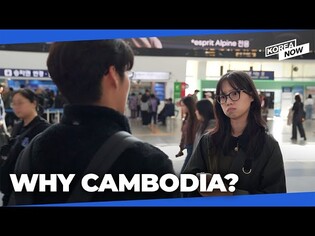





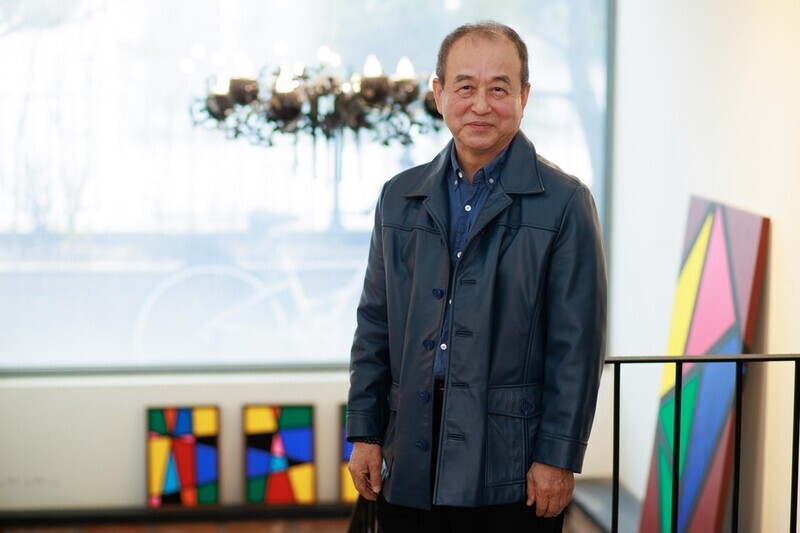

![[가요소식] 보이넥스트도어, 신보로 3연속 밀리언셀러 달성](/news/data/20251025/yna1065624915905018_166_h2.jpg)
